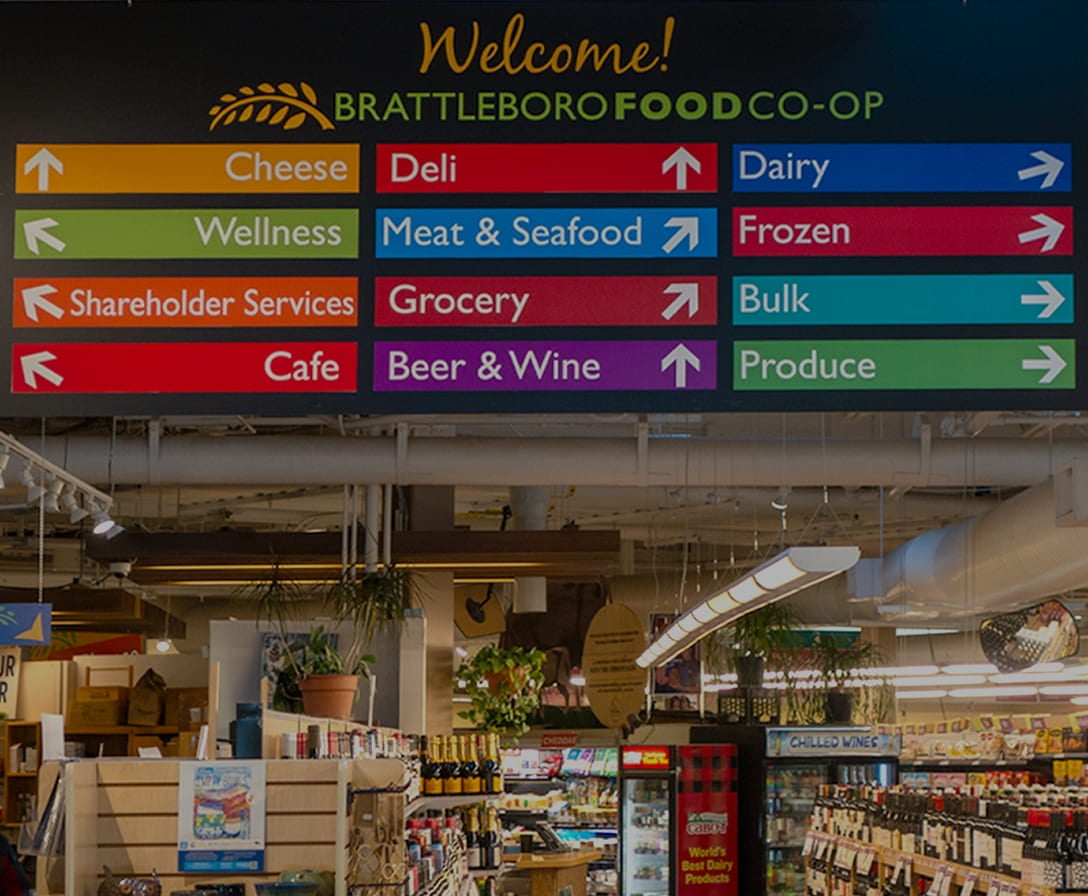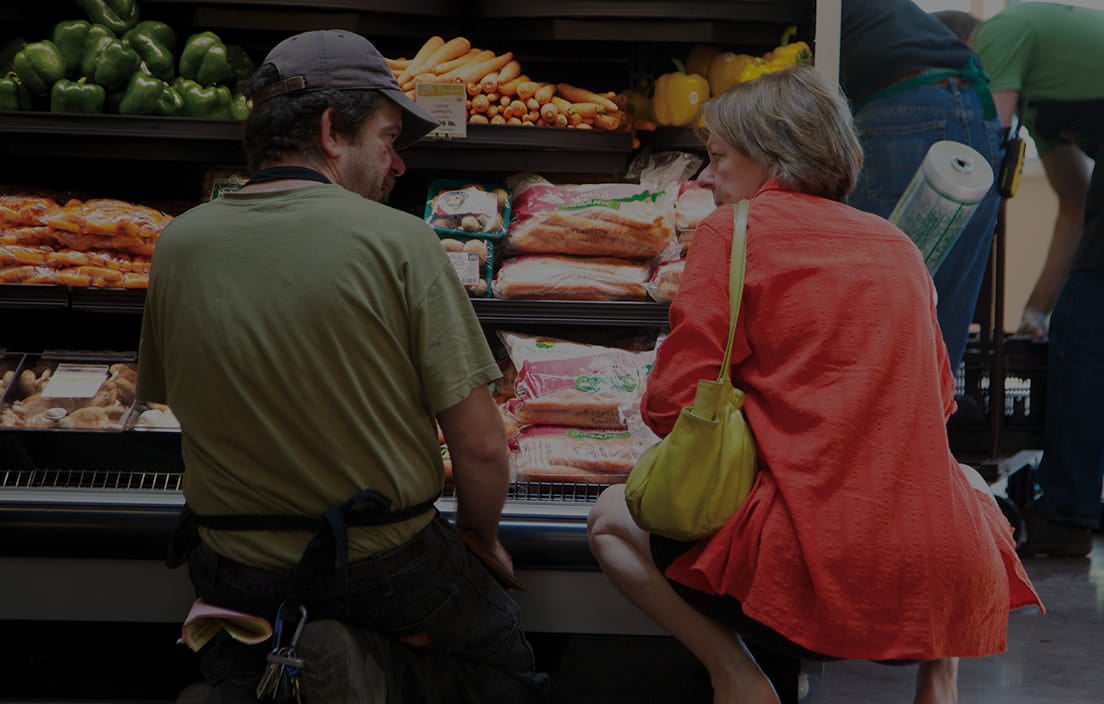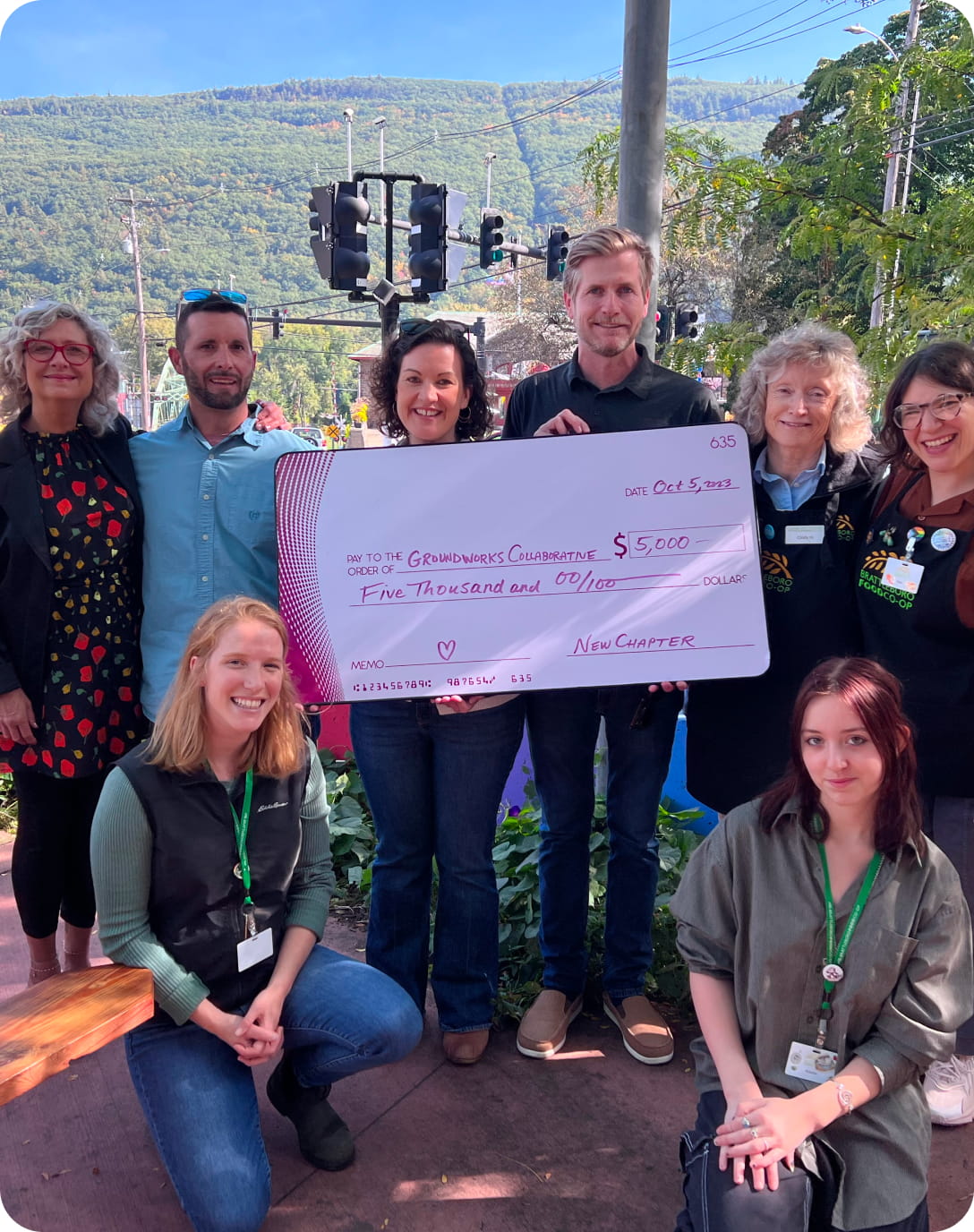The Co-op at 45
1975 marks the end of the Vietnam War with the fall of Saigon; the conviction of Mitchell, Haldeman and Ehrlichman, ending the Watergate Scandal; and the bombing of the State Department by the Weather Underground. 1975 also marks the beginning of Microsoft Corporation, Saturday Night Live, and the Brattleboro Food Co-op.
The BFC grew out of a buying club that David Schoales, Chair of the Windham Southeast School District remembers joining in 1972. The Co-op movement in the early seventies, as he remembers it, was part of the anti-capitalist counter culture at a time of great uncertainty. “I read the Whole Earth Catalog, was influenced by the Back to the Land Movement, bought a grain mill and started baking my own bread,” he told me. “I knew about co-ops because I was sewing and selling canvas shopping bags, and co-ops were my customers.”
In those very early days, Dave was part of the crew that drove to a co-op in Amherst to pick up food to be distributed in Brattleboro. But he moved to Boston for work in 1975, the same year Lynn Levine and Cliff Adler were among those who signed the Articles of Association that turned the informal buying club into the Brattleboro Food Co-op.
According to Lynn, volunteers at “Hotline for Help” applied for VISTA grants to help advance social service agencies around town: The Green Mountain Health Center, Youth Services, Hotline, and The Women’s Crisis Center (now The Women’s Freedom Center). Vista Volunteer, Peter Stolley, came to Brattleboro to help get the BFC up and running.
Jack Fredricks, kitchen designer at Cabinetree, saw one of Stolley’s ads placed in the Brattleboro Reformer to recruit members. “Twenty people showed up – followed by months of meetings.” Jack adds, “But the meetings paid off. We developed a thorough plan, including by-laws with structure to enable the Co-op to be a long-term, growing proposition.” Jack remembers, “Peter was pretty masterful about guiding us without being overbearing. It helped that we all brought different skills to the table.”
Cliff Adler served as the Co-op’s first Treasurer, working one day a week for twenty-three years. Both he and Jack, who was a Work Coordinator, remember their first salaries: five dollars a day. Lynn Levine served as Vice President, an unpaid position.
At first, the Co-op operated on the pre-order model: members placed their orders one week and picked it up the next. Member workers accepted deliveries at the Green Mountain Health Center, though memories differ as to whether the Co-op was located in the basement with the dirt floor or in the adjacent garage.
Everyone in the early days had a group name, enabling people to create their own households. Vermont Legislator Mollie Burke joined the Coop after it moved to its Flat Street location as part of the “Baker Block Commune,” named for a group of neighbors in her Main Street apartment building.
“I remember shopping there a lot,” Mollie told me. “Peter [Gould, Mollie’s husband] was on tour quite a lot, so I did the shopping. I liked the Co-op because they offered childcare. But the Flat Street store was challenging.” Located in what is now the Vermont Center for Photography, the entrance to the Flat Street store had five steps to negotiate. Mollie remembers, “I had to carry the groceries and the kids to the car. This was a big issue. No one was thinking about accessibility back then.” Accessibility became easier in 1988, when the Coop moved to the Main Street Plaza, when it also opened shopping to the public, so non-members could shop.
Mollie’s first impression of the current store in our new building was, “This is just too big! I don’t want the Co-op to expand any more, in terms of space,” Mollie says. “I have strong allegiance for what the Co-op stands for, and for the quality of the food. I hope the Co-op can stay where people know each other and doesn’t become corporatized or too big. I’m happy about the affordable housing,” she adds, referring to the top two floors of the building owned and operated by the Windham-Windsor Housing Trust.
Peter Gould, of the clown duo Gould and Stearns, remembers being happy that the Co-op started to sell meat when it moved to the Main Street Plaza, though Mollie remembers, “The decision to sell meat was contentious.” Peter acknowledges some dismay at the increase in shelves and products in the current space. “But I’m pleased to see the Co-op showcase food entrepreneurs, even if I mostly buy bulk, produce, cheese. They do a fantastic job with wine and beer, and bread from all over the state.” He adds, “I know that I’m paying for quality food that supports good jobs for local people.”
When asked about the future of the Co-op, Cliff spoke to the member discount structure, hoping to see a change to patronage dividends which is a common profit sharing for cooperatives based on volume of purchases. “It will have to be gradual,” he says, “to satisfy long-term members who don’t want to lose the working discount.”
Lynn Levine adds, “The Co-op is staying in touch with the reality of our community. We still have a sense of membership. Definitely.” She pauses, before adding, “We own it!”’
by Deb Luskin
About Producer of The Month

Shop Online

On Sale Now!

